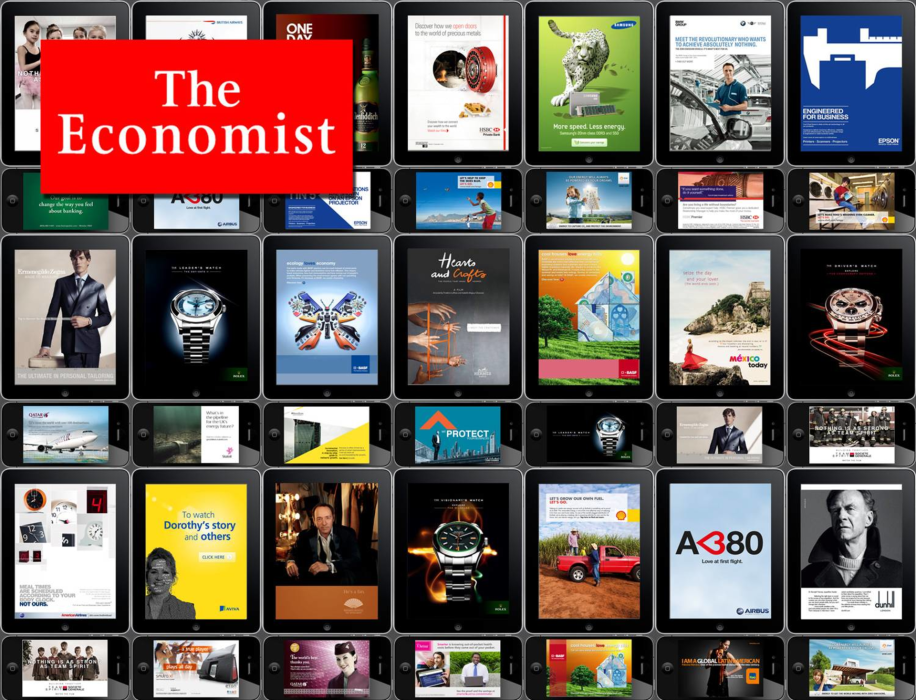In some cases, inheriting something is good—like a trunk of unexpected doubloons from an aged and benevolent relative. Other times, inheritance can get a little tricky, as in the case of an agency winning new business with an established brand. But that’s not an issue Atmosphere Proximity is worried about, according to John Gagné, the agency’s executive creative director. Atmosphere was recently named brand strategy and marketing lead for The Economist in North America.
“The Economist has a very prestigious brand legacy and there’s been great work done for it before us,” says Gagné. “Some creatives might tell you that’s a blessing and a curse, but we think it’s ultimately a blessing because we’ll become part of that story—and The Economist has a great story.”
It’s a story that began back in 1843, when The Economist was founded in England to advocate for a repeal of the corn laws, when it was no doubt required reading for the Whigs and Tories of the day…though it surely never occurred to them that future subscribers would be getting and sharing news via tiny magical talking devices with social integration (wizardry).
The magazine’s prestige can be a double-edged sword. While most people have heard of The Economist, many don’t “really know it,” says Gagné. It’s a state of affairs he and his creative team are looking forward to altering.
“Some people think it’s too intellectual or that it might be hard to read or that it doesn’t have any cultural information—all of which isn’t true,” he says. “In a sense, we’re looking at it like it’s a big beautiful target; if we can get The Economist in people’s hands or on their screens, we know they’ll love it—but the trick is getting it there.”
While many Economist readers still get their dose in print, the brand is starting to put a serious focus on digital and social. That’s just where the people are, says Dayna De Simone, brand communications directors for The Economist Digital in the Americas.
“But it only makes sense to market and speak to them through those channels appropriately,” says De Simone. “You could say it’s a shift [from print to digital], but it’s really more of a progression, speaking to people where they already are.”
Atmosphere’s new work for The Economist is set to come out in Q1 2013, so pretty soon—but lips are tightly sealed until the official launch. While De Simone couldn’t share any specific details, she was able to say the campaign remit is about ensuring people have “the right perception” of the brand.
“There’s been a rapid transition to digital and social,” she says. “What we’re doing is entering the conversation people are already having and adding value and utility.”
Digital isn’t a disruptive technology anymore, says Gagné. Look at the music industry. Ten years ago musicians were sweating bullets; now they’re giving their songs away for free to drive sales.
“In publishing, it comes down to the brand and the content,” says Gagné. “If that’s strong and valuable, be it digital or print, it will continue to be valuable to its audience.”








